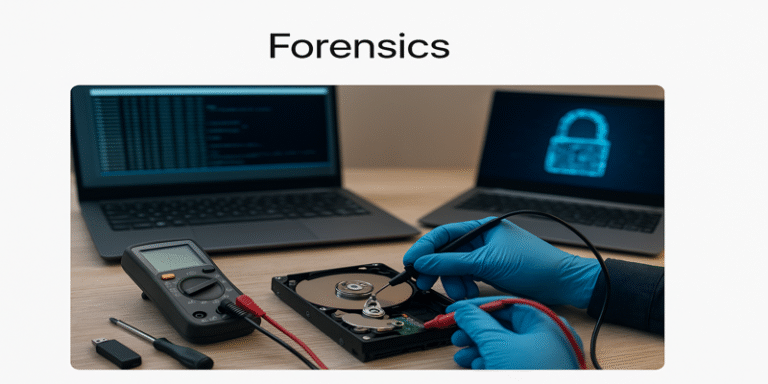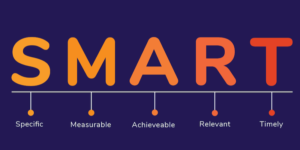Digital forensics is a rapidly evolving area within forensic science that focuses on the recovery, authentication, and analysis of data from electronic devices and networks. In today’s highly digitalised society, understanding the principles, tools, and legal frameworks that govern digital forensic investigations is crucial for identifying and mitigating cyber threats, as well as upholding justice. This article provides an overview of the core topics in digital forensics, exploring investigative processes, legal and ethical considerations, tools and techniques, and the roles of professional and regulatory bodies in ensuring effective and lawful forensic practice.
1.0 Understanding Digital Forensics
Digital forensics is the systematic process of identifying, collecting, preserving, analysing, and presenting electronic evidence in a manner that maintains its integrity and admissibility in court (Li, Dhami & Ho, 2015). It encompasses multiple domains, including computer forensics, mobile forensics, network forensics, and cloud forensics. The importance of digital forensics lies in its ability to reconstruct events, detect intrusions, and uncover malicious activities in both criminal and civil contexts (Saharan & Yadav, 2022).
According to Sutherland, Bovee and Xynos (2023), best practices in digital forensics require an established process involving rigorous adherence to legal guidelines, data integrity standards, and ethical protocols. These practices ensure that digital evidence, often volatile and easily alterable, remains valid and reliable for judicial scrutiny.
2.0 The Process of Digital Forensic Investigation
The digital forensic investigation process follows a structured methodology to ensure that evidence is handled with precision and accountability. According to Koleoso (2018), this process can be divided into five key stages:
- Policy and Procedure Development – Establishing protocols that align with both organisational security policies and legal frameworks such as the Computer Misuse Act 1990.
- Evidence Assessment – Determining the scope of the investigation and identifying potential evidence sources such as log files, memory dumps, and network packets.
- Evidence Acquisition – Using forensically sound tools to copy and preserve data without altering its original state (Marshall, 2022).
- Evidence Examination and Analysis – Employing techniques like data carving, hash verification, and timeline reconstruction to uncover relevant information.
- Presentation and Reporting – Documenting findings in a format that is both technically accurate and legally comprehensible.
An example of this process in action is the use of Security Information and Event Management (SIEM) systems, which integrate log data from multiple devices to identify suspicious activities across networks (Alshebel, 2020). These systems help investigators to correlate evidence and perform root cause analysis of breaches.
3.0 Sources of Information in Digital Forensics
Digital forensic analysts rely on diverse information sources to conduct thorough investigations. These include log files, system monitors, access control logs, and file metadata, which collectively enable analysts to reconstruct the sequence of user actions and system responses (Harini, 2024). For instance, log correlation across devices can reveal unauthorised access attempts, while anomaly detection in network traffic may indicate a cyber attack or malware infiltration.
Moreover, non-traditional sources such as social media, hacker blogs, and manufacturer bulletins provide contextual intelligence on emerging threats and zero-day vulnerabilities (Nwafor, 2024). Combining these data points supports triangulation, enhancing the accuracy and validity of forensic conclusions.
4.0 Legal and Ethical Considerations
Conducting digital forensic investigations in the United Kingdom requires compliance with several key legislations:
- The Data Protection Act 2018 (DPA 2018) ensures that investigators handle personal data responsibly, applying principles of lawfulness, fairness, and transparency (Ferguson, Renaud & Wilford, 2020).
- The Computer Misuse Act 1990 criminalises unauthorised access to computer systems and the misuse of data, forming the foundation of UK cybercrime legislation (Li et al., 2015).
- The Freedom of Information Act 2000 provides access to public data, but it also sets boundaries for what can be disclosed during forensic analysis.
Ethical frameworks such as PRECEPT (Ferguson et al., 2020) promote integrity, objectivity, and accountability, guiding forensic practitioners in avoiding conflicts of interest and ensuring transparency in their work. Investigators are ethically bound to preserve the confidentiality of evidence and avoid bias in interpretation.
5.0 Law Enforcement and Regulatory Frameworks
In the UK, law enforcement agencies such as MI5, MI6, and GCHQ play vital roles in cyber intelligence, incident response, and digital evidence collection. The Association of Chief Police Officers (ACPO) guidelines outline four key principles for handling digital evidence (Marshall, 2022):
- No action should change data that may later be relied upon in court.
- Competent persons should handle digital evidence.
- An audit trail must be maintained.
- The agency in charge bears responsibility for compliance and integrity.
These guidelines reinforce the chain of custody concept, ensuring every action on evidence is traceable and justified (Al-Khateeb, Epiphaniou & Daly, 2019).
6.0 Tools and Techniques in Digital Forensics
Digital forensic tools can be categorised into hardware and software utilities used for imaging, analysis, and reporting. Commonly used tools include EnCase, FTK (Forensic Toolkit), Autopsy, and Wireshark. These enable analysts to examine file systems, recover deleted data, and analyse network packets.
For example, Wireshark assists in network forensics by capturing and decoding packets to identify malicious traffic patterns or protocol anomalies. FTK Imager, on the other hand, enables the bit-by-bit duplication of hard drives, preserving evidence for detailed analysis without modifying the original source (Sutherland et al., 2023).
To mitigate false positives and negatives, analysts employ correlation algorithms and statistical verification methods, ensuring the reliability of their results.
7.0 Operating Systems and File Structures
Understanding low-level file structures across various operating systems is fundamental in digital forensics. Systems such as Windows (NTFS), UNIX/Linux (EXT4), and macOS (APFS) store data differently, and each has unique metadata handling and file recovery challenges (Li et al., 2015). For instance, slack space and unallocated clusters in NTFS may contain remnants of deleted files, crucial for reconstructing user activity.
Similarly, Android and iOS devices often employ encryption layers, complicating access and requiring advanced decryption and extraction techniques. Forensic experts must remain updated with evolving OS architectures to maintain investigative competence.
8.0 Forensic Examination Planning and Risk Assessment
Developing a forensic examination plan involves identifying potential risks and vulnerabilities that may impact data integrity. Analysts apply risk assessment and audit methodologies to anticipate data volatility, access restrictions, or potential evidence contamination (Koleoso, 2018).
A robust plan typically includes:
- Scope definition and case objectives.
- Resource allocation, including personnel and tools.
- Contingency measures for evidence loss or corruption.
- Documentation protocols for chain-of-custody compliance.
Adhering to best practice recommendations from professional bodies such as the Forensic Science Society and the British Computer Society (BCS) ensures that investigations are conducted in line with industry and legal standards (Alshebel, 2020).
9.0 Current and Future Directions
Emerging technologies such as blockchain are revolutionising forensic processes by providing immutable chain-of-custody records (Al-Khateeb et al., 2019). Similarly, artificial intelligence (AI) is being integrated into forensic tools for pattern recognition, anomaly detection, and automated evidence classification (Harini, 2024).
The increasing complexity of cybercrime—ranging from ransomware attacks to nation-state espionage—demands ongoing development of forensic methodologies and international cooperation between enforcement agencies.
Digital forensics stands as a vital discipline at the intersection of technology, law, and ethics. Through structured investigative processes, robust legal compliance, and the application of advanced tools, digital forensic professionals play an indispensable role in both preventing and prosecuting cybercrime. For students and practitioners alike, mastering communication literacy, critical analysis, and technical proficiency are key to succeeding in this dynamic and indispensable field.
References
Al-Khateeb, H., Epiphaniou, G. & Daly, H. (2019). Blockchain for modern digital forensics: The chain-of-custody as a distributed ledger. Springer.
Alshebel, A.K.S. (2020). Standardisation Requirements for Digital Forensic Laboratories: A Document Analysis and Guideline. Auckland University of Technology.
Ferguson, R.I., Renaud, K. & Wilford, S. (2020). ‘PRECEPT: A framework for ethical digital forensics investigations’, Journal of Intellectual Capital, 21(4), pp. 567–584.
Harini, K. (2024). ‘Cyber Forensic and Crime Investigation’, LawFoyer International Journal of Doctrinal Legal Research.
Koleoso, R.A. (2018). A Digital Forensics Investigation Model for Confidentiality, Integrity and Authenticity. University of Lagos.
Li, S., Dhami, M.K. & Ho, A.T.S. (2015). ‘Standards and Best Practices in Digital and Multimedia Forensics’, Wiley Digital Forensics of Multimedia Data, pp. 25–47.
Marshall, A. (2022). Digital Evidence Regulation: An Assessment of Underlying Issues in England and Wales. University of Leeds.
Saharan, S. & Yadav, B. (2022). Digital and Cyber Forensics: A Contemporary Evolution in Forensic Sciences. Springer.
Sutherland, I., Bovee, M. & Xynos, K. (2023). Legal and Ethical Issues of Pre-Incident Forensic Analysis. CRC Press.
Nwafor, I.E. (2024). ‘Cybercrime Investigation and Prosecution in Nigeria: Bridging the Gaps’, African Journal of Legal Studies, 16(3), pp. 249–269.









